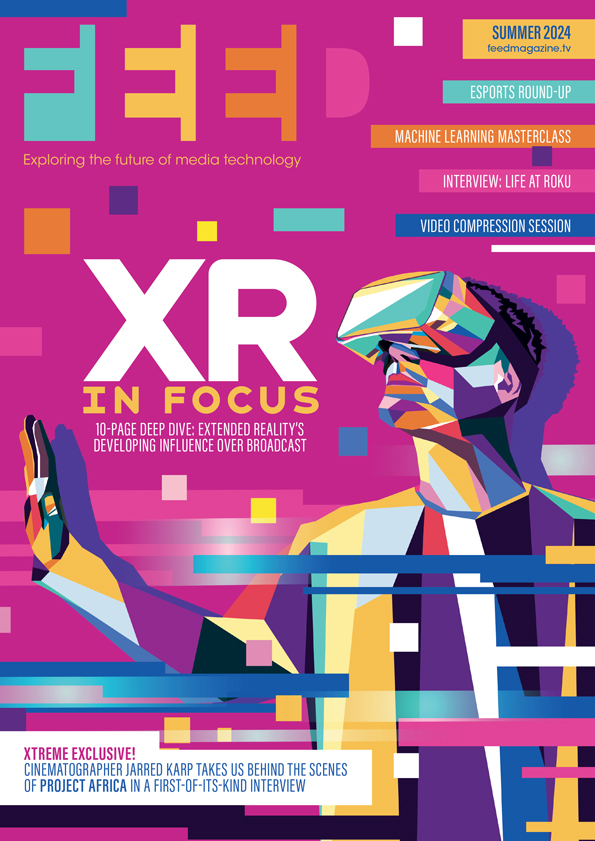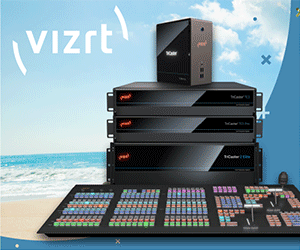Sony: Your ground-to-cloud journey

Posted on Mar 4, 2023 by FEED Staff
Sponsored editorial
The on-premises vs cloud debate is over – and both sides have won
As the world transforms and the media industry moves along with it, companies constantly need to take stock of where they are and where they want to go. If your business vision is the same as it was a decade ago – well, there’s nothing wrong with that. But make sure you’re holding on to it for the right reasons, not just because you’re afraid of change.
Sony Imaging & Product Solutions has always kept a close watch on what customers want and, as a result, is always fine-tuning its offerings to not only stay relevant, but anticipate customer needs.
“You have to be interpreting how the market is evolving. If you are a manufacturer and aren’t doing that, you are making a fundamental mistake,” asserts the head of media solutions for Sony Europe, Olivier Bovis.
In its conversations with broadcast industry experts and the analysis of feedback from bodies like the DPP or IABM, Sony sees a challenging time on the horizon. Not only for traditional broadcasters, but even OTT service providers who, after exponential growth over the past few years, are starting to look at where new revenue might come from.
The pandemic has also become a demarcation line for companies, who are now searching to diversify their operations, take advantage of new technologies for distributed workflows, as well as accommodate changing cultural attitudes to work itself. Working remotely across distributed hubs is no longer ‘nice to have’, it’s standard procedure.
“The past two years have accelerated production requirements,” says Bovis. “It’s manifesting not just in specific applications or program creation genres, but throughout the values of entire organisations.”
As a result, Sony has realigned its products and solutions along the axis of a new three-part vision called Architecting the Future of Media. The company has built its customer strategy on three main pillars: creating content value, workflow efficiency and sustainable platforms, taking into account the evolution of viewers’ behaviours. The latter has forced media companies to evolve flexible ways to reach a fragmented audience.
Spinning up solutions
Sony has always been renowned for both its image acquisition at the beginning of the content supply chain and its display technology at the very end. Content captured with a Sony camera often ends up shown on a Sony monitor. But the new vision brings forward its ecosystem of tools, services and integration points that span the space between these poles. To serve the newly unfolding workflow paradigm, this ecosystem oscillates between both on-premises and cloud-based solutions.
Creating a direct gateway from acquisition to cloud is key to taking advantage of a host of technologies, including media asset management, analytics and machine-learning-powered tools for cataloguing, transcribing and automation, as well as enabling distributed and remote production.
Sony’s recent acquisition of Nevion has reinforced the company’s toolset for distributing and managing media across on-premises – or ‘on-ground’ since even the notion of a premises is becoming geographically distributed – and cloud-based tools. The future is not an either/or choice between ground and cloud, but a skillful collaboration between the two, enabled by Sony technology.
Bovis explains: “If, on a broadcast, you need more resource in a certain location because you have a peak of activity there, you may choose to use resource available in an OB van, but also combine it dynamically with other parts of your workflow – including a complementary cloud service – as you see fit. You could use the cloud service for a few hours, or a specific type of application, then shut it down when you don’t need it any more.
“In the world of live broadcast, most of the time the customer is only functioning at 70 to 80% of the capacity of the system. The remainder, which is used only rarely, is there to handle the peaks of demand. This flexible provisioning will allow them to make significant cost savings on infrastructure.
Selecting on-premises hardware to complement your cloud resources should be a central part of a broadcaster’s strategy. Sony’s MLS-X1 modular switcher, for example, allows for highly flexibile configuration that allows you to scale as needed.
However, cloud brings with it other concerns that need to be addressed if large-scale hybrid workflows are to run seamlessly.
“One of the fundamental challenges we face in this more cloud-centric vision is the cost of data transport, the security and the storage increase that can become a fairly costly exercise. One basic need is to reduce those expenses and provide a latency that makes it seem like you’re working with something that’s just around the corner.”
The partnership with Nevion has provided Sony with firepower at the level of architecture, as well as R&D. Within the first year of the acquisition, Sony was already implementing Nevion codecs.
“Creating a direct gateway from acquisition to cloud is key to taking advantage of a host of technologies”
Glass to cloud
New ground and cloud workflows are further enablers of Sony’s capture and display technologies. Some brands try to boast glass-to-glass workflows, but Sony’s glass has been working at both ends of the workflow for decades.
“Until recently, acquisition tools were used like an edge device,” states Bovis. “You go to a location, bring back footage and ingest it somewhere else, then work with it. Or you may be able to stream with third-party products. Our basic idea is to go deeper and make the camcorder part of the cloud service.”
Connecting cameras directly to the cloud makes footage instantly available to anyone. A Hong Kong team could access footage streamed into the cloud by a camera operator in Berlin, to be worked on even while the shoot is still ongoing. Faster networks will make working like this a no-brainer. Innovations like Sony’s QoS streaming technology and its trials in 5G slicing will make this connectivity faster and simpler.
Consumer-professional convergence
Just as technologies from disparate parts of the workflow are becoming interconnected, so are professional and consumer-grade technologies. In fact, the goal of being able to do professional broadcast workflows over the consumer-grade public internet has been a long-established goal of many media companies.
Sony’s new FR7 PTZ camera, for example, brings PTZs into the world of high-end production with an E-mount interchangeable lens and full-frame sensor. More and more, tools that were once available only to high-end facilities can be accessed through a web browser by almost anyone, anywhere.
Yet, considering the benefits of flexible ground-to-cloud workflows is an academic exercise if the economics don’t work out. And we are entering a very tricky time for businesses of all kinds.
“There is the reality of the economics. It’s nice to dream that everybody will go remote through cloud. But, as we all know, everyone will go at a different pace with different requirements.
“We must take into account the transition between the world of physical appliances and the world of nothing but cloud. There is a long journey between them, and we need to look at it both in terms of economics and functionality. That is part of what we are bringing with this hybrid vision.”
Find out more on pro.sony/vision
This article first featured in the winter 2022 issue of FEED magazine.










